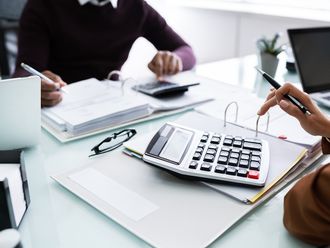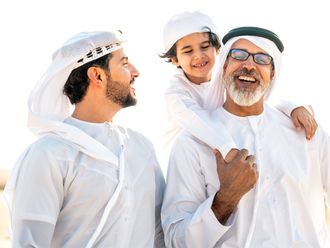
With more than ten funds and close to $2 trillion (Dh7.3 trillion) worth of assets under management (AUM), the six GCC countries are home to the highest concentration of the world’s sovereign wealth funds (SWFs). While global SWFs currently control an aggregate of about $5.4 trillion in AUM, SWFs in the GCC account for more than 34 per cent as per the United Nations. According to the current rankings issued by the SWF Institute, the Abu Dhabi Investment Authority (ADIA) is the world’s second-largest SWF with an AUM of $773 billion.
As liquidity tightened across the West, largely due to the lingering impact of the financial crisis, the influence yielded by the GCC’s SWFs on the global economy has grown. Now, more than ever, these SWFs are viewed by the world as an important source of capital, and this is confirmed by Moody’s Investors Service. “GCC countries, except Bahrain, have maintained fiscal surpluses and GCC governments have reinforced their global creditor position with an estimated $1.9 trillion in SWF assets, up from $1.3 trillion in 2010,” Lucio Mauro Vinhas de Souza, Managing Director — Sovereign Chief Economist of Moody’s told Gulf News last month.
However, regional SWFs appear to be viewing the West with caution and have invested less internationally in the recent past. The other obvious, and collective, reasons are their aims to diversify, benefit from international opportunities and maintain more balanced portfolios. Partly driven by international forces such as the Eurozone debt crisis, and partly by local, such as the Arab Spring, it is becoming evident that SWFs are redirecting a portion of their funds from international investments back into the region, and also into untapped areas.
Local development
It is a little known fact that the Kuwait Investment Authority (KIA), established in 1953, is the oldest sovereign wealth fund in the world. But the whole world now watches KIA’s moves with bated breath as it goes about acquiring and exiting stakes in prestigious companies such as BP, Citibank, Daimler, Merrill Lynch, CVC Capital and others. However, what is even lesser known is the great influence that KIA has on Kuwait’s economy, and the role it plays in supporting the government’s agenda of national development, often acting as the financier. In one of the many examples, the Kuwaiti Government is planning to establish the Kuwait Health Assurance Company by 2015, with an estimated capital of $1.1 billion, to augment the country’s health-care capacity and KIA is expected to hold a 24 per cent stake.
KPMG’s May 2013 report, Emerging Trends in the Sovereign Wealth Fund Landscape, poses pertinent questions about the GCC’s SWFs and easily answers most of them. In his essay, Vikas Papriwal, KPMG’s Partner and Head of Sovereign Wealth Funds and Private Equity in the UAE and Oman, writes: “Investment statistics suggest a near 70 per cent increase in GCC-focused investments by regional SWFs. Therefore, the question arises: what has driven this apparent shift in the SWF investment paradigm?”
While GCC SWFs have historically demonstrated keen interest in infrastructure and real estate investments, the proportion of these investments is set to increase considerably as governments redirect a greater portion of their sovereign wealth to achieve local development objectives. The report predicts that the GCC will spend approximately $142 billion on infrastructure until 2020, most of it on rail and road projects and planned mega projects such as Saudi Arabia’s $86-billion King Abdullah Economic City, Qatar’s $70-billion 2022 FIFA World Cup-related infrastructure, and the UAE’s $20-billion Masdar City.
“There is no doubt that SWFs in the region are continually evolving and, as part of this, becoming increasingly sophisticated in their operations and execution of their respective investment strategies. While investment objectives have certainly changed — including geographical and sector focus — diversification remains a key and common objective, as they seek to reduce their reliance on energy, oil and gas prices,” Papriwal emphasises.
Realty and diversification
Diversification is certainly part of the Qatar Investment Authority’s (QIA) plans. Rajesh Menon, Partner, KPMG Qatar, says, “Large stakes in household names in financial services such as Credit Suisse, Barclays, Agricultural Bank of China, Banco Santander Brasil, and the London Stock Exchange are as much a part of QIA’s portfolio as Volkswagen, Porsche, Tiffany, LVMH, Sainsbury’s or Harrods. Other investments include the QIA’s stake in French oil major Total, Royal Dutch Shell and BAA, the owner of London’s Heathrow airport.”
GCC Report’s January 2014 newsletter predicts patterns for the region’s SWFs for this year, based on trends that made itself felt in 2013: “Growing assets, increasing allocations to alternative investments, diversifying into emerging markets, hiring internal investment staff and increasing direct investments. However, real estate investment continues to be one of the strongest ongoing trends and is expected to remain so in 2014. While global SWFs invested $11.09 billion in real estate as of November 2013, the GCC’s SWFs continued making real estate deals into December.”
Local pension funds
In a report by Invesco presented in association with strategy consultants NMG, another emerging trend for the region’s SWFs is pension funds. The Middle East Asset Management Study 2013 states: “We estimate that pension funds now make up more than 15 per cent of all new sovereign assets placed in the region. However, we have observed top-down pressures to prioritise local over international investment, and our analysis of new asset placements suggests that local GCC allocations have increased from 62 to 71 per cent since 2011. While the trend towards local investment may be structural for SWFs, most pension funds expect international allocations to rebound in the future.”
Alternative asset classes
Another recent Invesco report states that SWFs are increasing investments in alternative assets, particularly real estate and private equity, with 69 per cent of the GCC’s SWFs citing an increase in allocations to alternative assets. A study by Natixis Bank concurs that GCC funds are increasingly switching from more conservative investments to alternative investments such as private equity and hedge funds.
Finally, in a more recent trend, GCC SWFs seem to be active in sports and fashion investments. The GCC Report observes that while Mubadala is already a minority investor in IMG, the sports, fashion and media firm ADIA is considering buying the naming rights to Sao Paulo’s World Cup football stadium and Qatar Holding is planning a 20 per cent stake in Gianni Versace S.p.A. through a transaction valued at about €250 million (around Dh1.26 billion).












